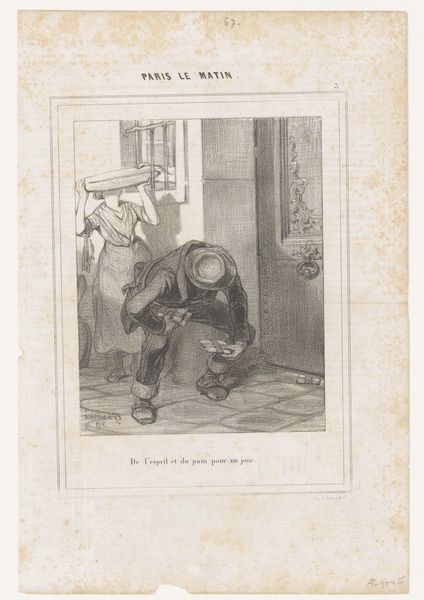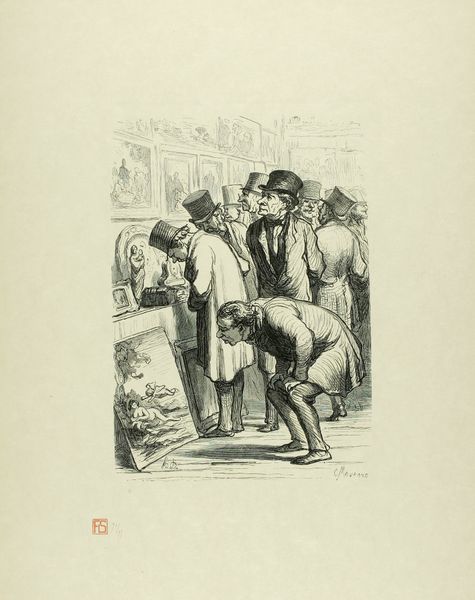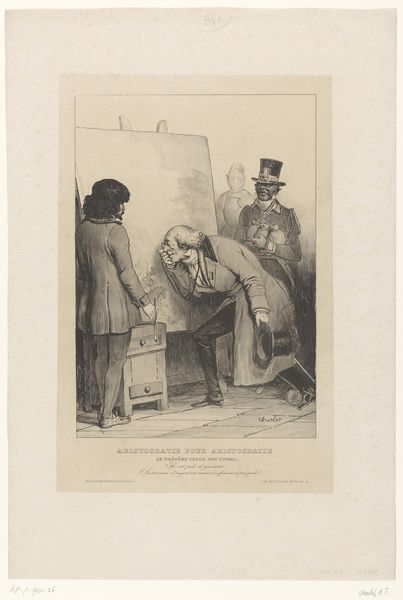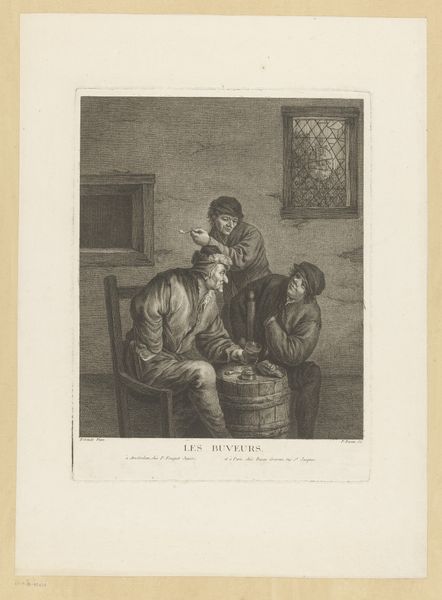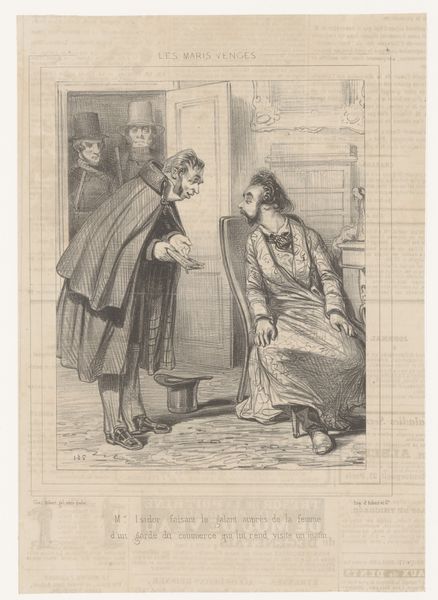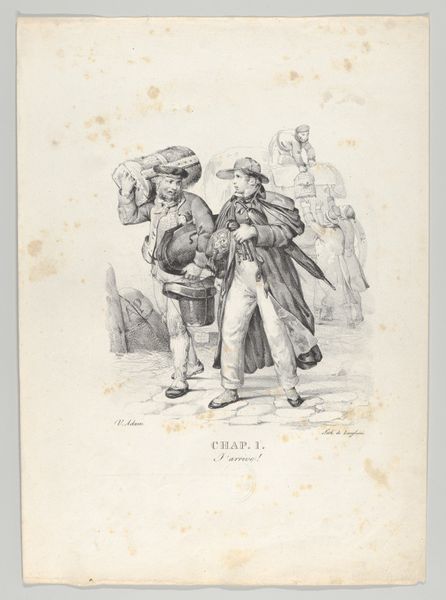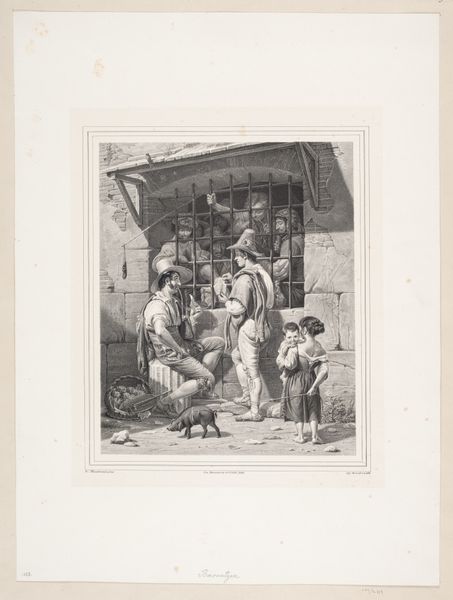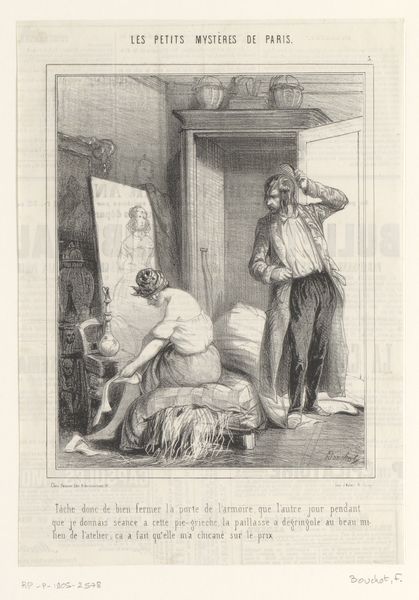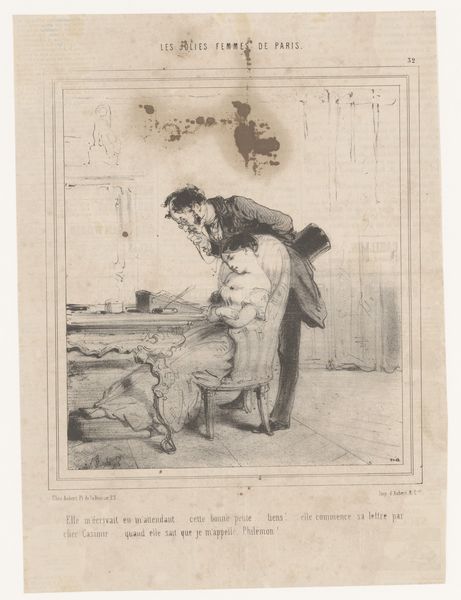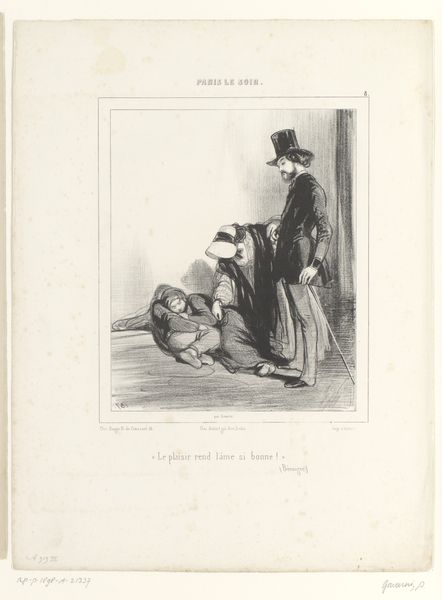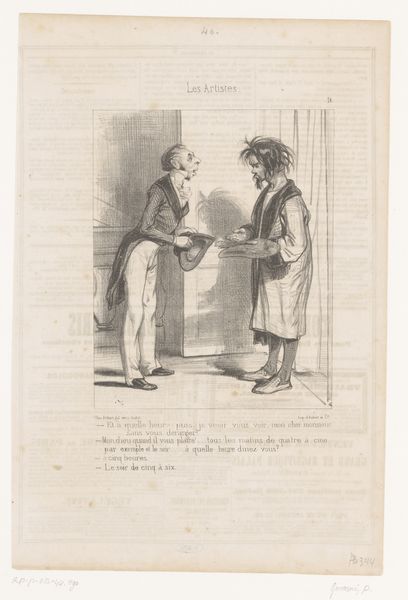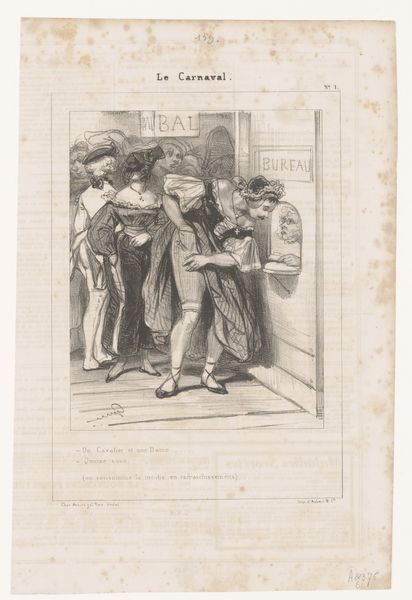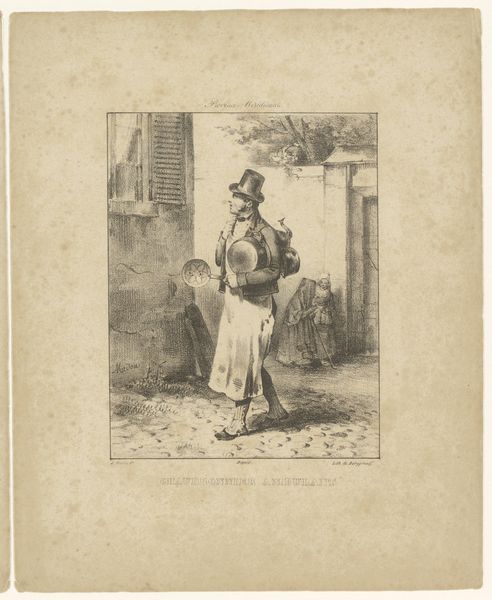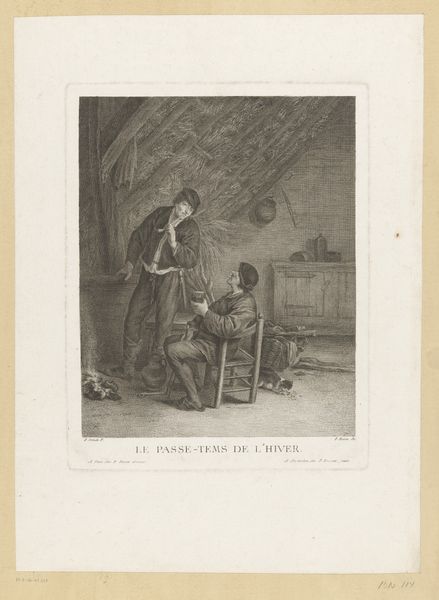
drawing, pencil
#
portrait
#
drawing
#
caricature
#
romanticism
#
pencil
Dimensions: height 323 mm, width 233 mm
Copyright: Rijks Museum: Open Domain
Editor: We’re looking at Paul Gavarni’s "Kunstenaar steekt sigaar aan," a pencil drawing from 1838, held at the Rijksmuseum. I'm struck by the almost satirical portrayal of the artist— the lean figure bending to light a cigar from what looks like a street performer’s fire. How do you interpret this work? Curator: This piece is ripe for socio-historical analysis. Gavarni often commented on the Parisian art world and its characters. Think about the context: early 19th-century Paris, burgeoning artistic circles, the rise of bohemia. The “artist” here isn’t elevated but rather dependent, scavenging a light from someone lower on the social ladder. How does this depiction challenge or reinforce existing views on artists? Editor: That makes me see it differently. It’s less a romantic depiction of artistry and more a commentary on the artist's precarious position. Like they have to bum a light, borrow inspiration, and depend on each other, maybe? Curator: Exactly. Consider also the visual economy of the drawing. Note the stark contrast between the meticulously dressed man versus the working-class figure providing the flame. What kind of social dynamic do you think Gavarni wanted to showcase with those choices? Editor: Perhaps highlighting the blurred lines and dependencies between different social classes within the art scene? Or is it an argument for accessibility in art and how art permeates social classes? Curator: Both readings are valid and speak to the complexity of the era. What did Gavarni intend, and what could his contemporary audiences derive based on the setting they knew so well? It underscores how much the reception of art is tied to the socio-political lens through which it’s viewed. Editor: I never thought about caricature as having the possibility of being layered with all of that. Thanks for illuminating Gavarni's intent and broader implications within a societal context. Curator: My pleasure! Remember, art doesn't exist in a vacuum; it reflects and shapes its world, just as Gavarni captured a fleeting moment in Parisian society.
Comments
No comments
Be the first to comment and join the conversation on the ultimate creative platform.
